From goldfinch to greenfinch and muntjac to pheasant, Mat Bingham observes the wildlife that thrives in amongst his neighbour’s rapeseed crop.
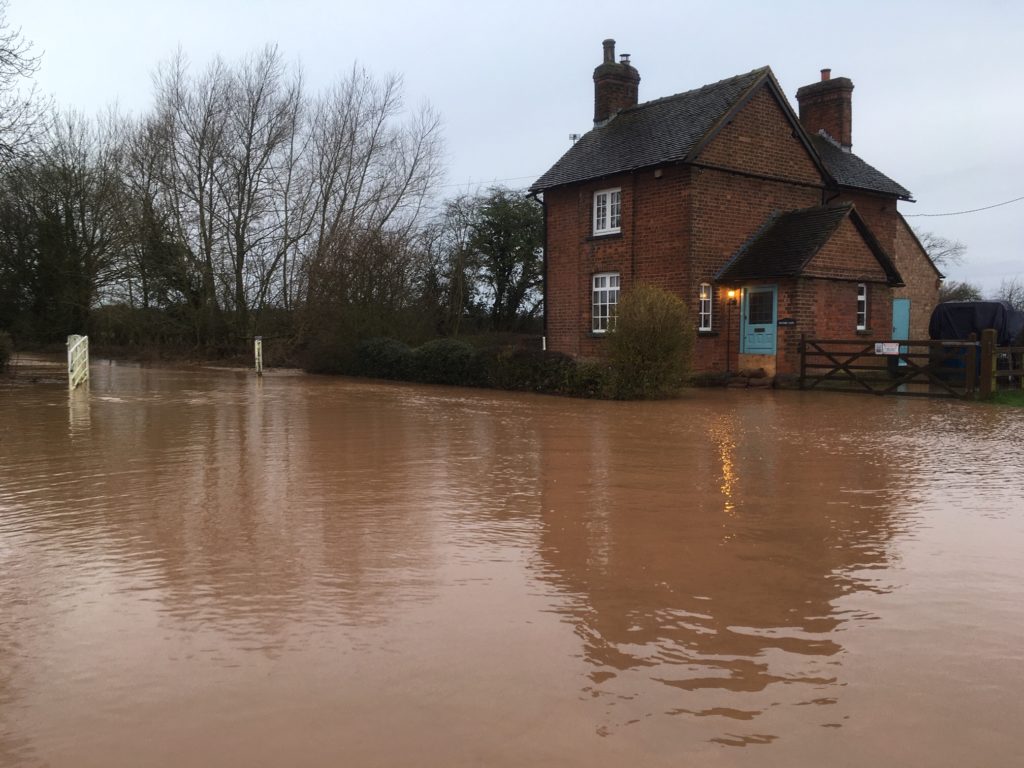
During lockdown our cottage became an island in a sea of yellow. Our neighbor has sown rapeseed as the primary crop for harvesting this year. Its Latin name is Brassica napus, a yellow flowering plant that is a member of the mustard or cabbage family. It flowers early in the spring and is harvested in late July, when it has gone to seed.
The rapeseed was sown in the autumn last year, shortly before we experienced the worst flooding ever at the cottage. The floodwater caused a lot of the rapeseed shoots to fail, resulting in a much less densely packed crop. The consequence of this is that 2020 has been the most successful year for farmland birds since we have lived at the cottage.
Being limited to local walks during lockdown, I kept a journal of the birds and mammals I observed in the rapeseed. These are some of the extracts:
Sunday 7th June 2020
I have never seen so many skylarks; they are a joy to watch. In this warm sunny weather, their ascent is assisted by thermals rising higher and higher over the field until they are a tiny speck overhead. It’s strange but even when they are barely discernable up in the clouds, their song can still be heard clearly. Once they have summited, they hold out their wings and gently parachute earthwards. Tiny adjustments of tail and wings ensure they land in the rapeseed where they started their spectacular show.
Either side of the lane in the rapeseed there are singing male reed buntings perched on the tallest stems. Their song is a simple couple of bars repeated over and over.
There must be hundreds of yellowhammers nesting in the rapeseed; there is a constant flow of avian traffic to the field margins to collect insects and caterpillars.
Tuesday 9th June 2020
This morning a large mixed flock of goldfinches, greenfinches and linnet were feeding on the rapeseed. The colour of their breeding plumage really stands out against the pastel green rapeseed.
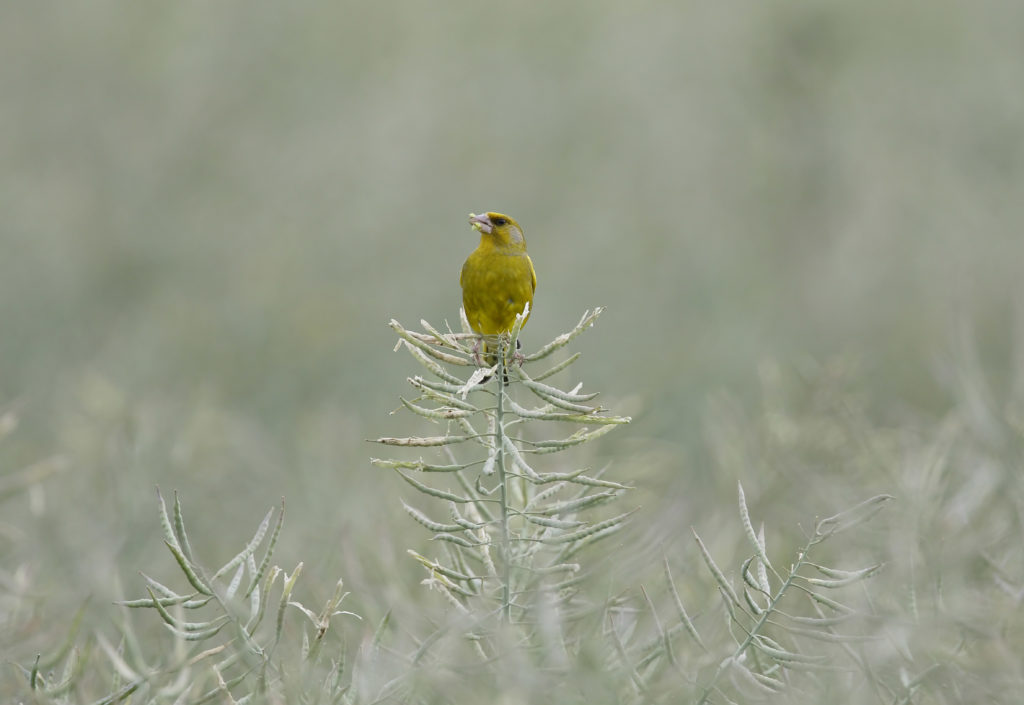
The male reed buntings are still singing from their prominent positions in the field. They start at dawn, have a brief break at midday and then continue to sing until dusk. I can hear them from the kitchen whilst working.
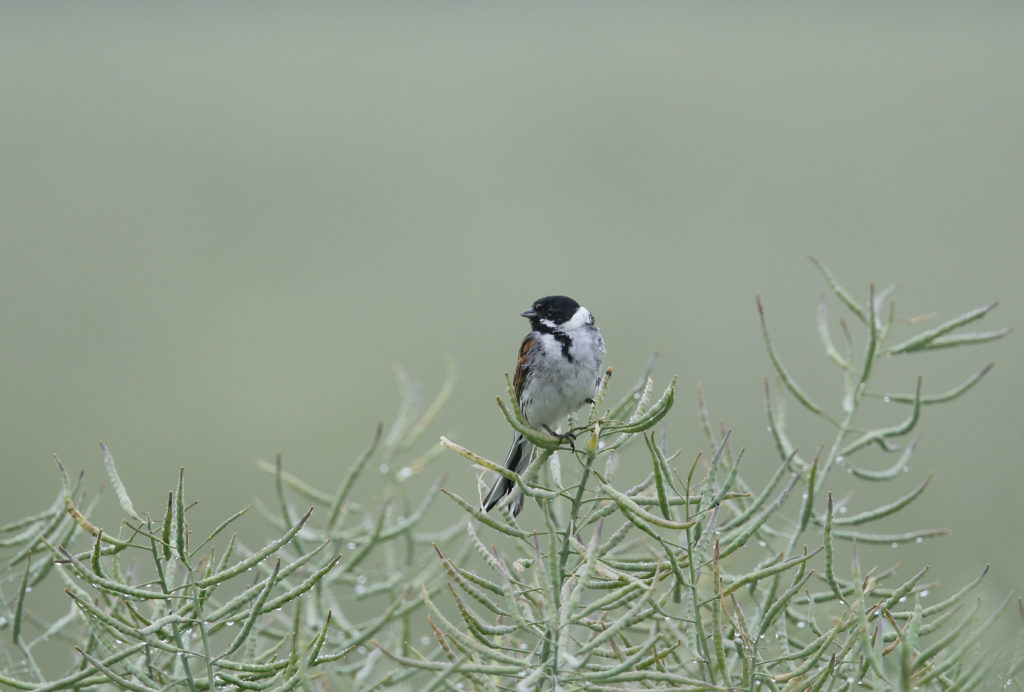
Wednesday 17th June 2020
There are two singing male whitethroats competing with each other in the rapeseed.
Some of the goldfinch and greenfinch flock visit the feeders in our garden, bringing their fledglings with them. I am happy to see such a healthy population of greenfinches, we normally only see the odd one in the garden.
Only one pair of yellowhammers are brave enough to venture over the hedge to our garden feeders.
Saturday 27th June 2020
At dusk there were three brown hares on the edge of the rapeseed. They were feeding on the fresh green shoots of the cover crop, planted to stop soil erosion where the flooding washed away the rapeseed.
Sunday 28th June 2020
I put the day’s work on hold and lay down in the field margin. It was like being under the Heathrow flight path — there were scores of yellowhammers flying to and from their nests, collecting insects to feed to their young.
There is a rabbit warren located on the field margin; at least three rabbits were playing at the one of the entrances. They stopped and appeared tense at one point. A fox launched itself from the cover of the rapeseed but missed its mark. The fox was in beautiful condition. It sniffed around the rabbit warren entrance and made a half-hearted attempt at digging out the rabbits, before giving up and slinking away.
I stayed a while longer as the sun was shining. A pair of muntjac deer emerged from one of the tramlines left by the tractors. The feeding muntjacs stayed for about twenty minutes before finally heading back into the rapeseed.
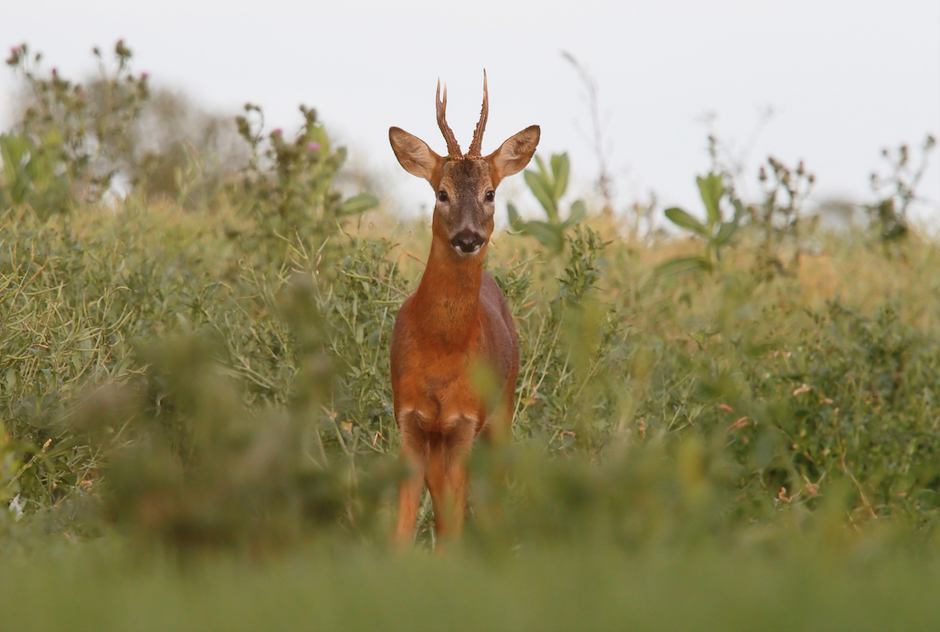
Sunday 5th July 2020
I returned to the same location the following evening. A male pheasant was patrolling along the field boundary. A family of partridge emerged to peck away at the cover crop.
There were quite a few flattened areas in the cover crop where the brown hares had laid up during the day.
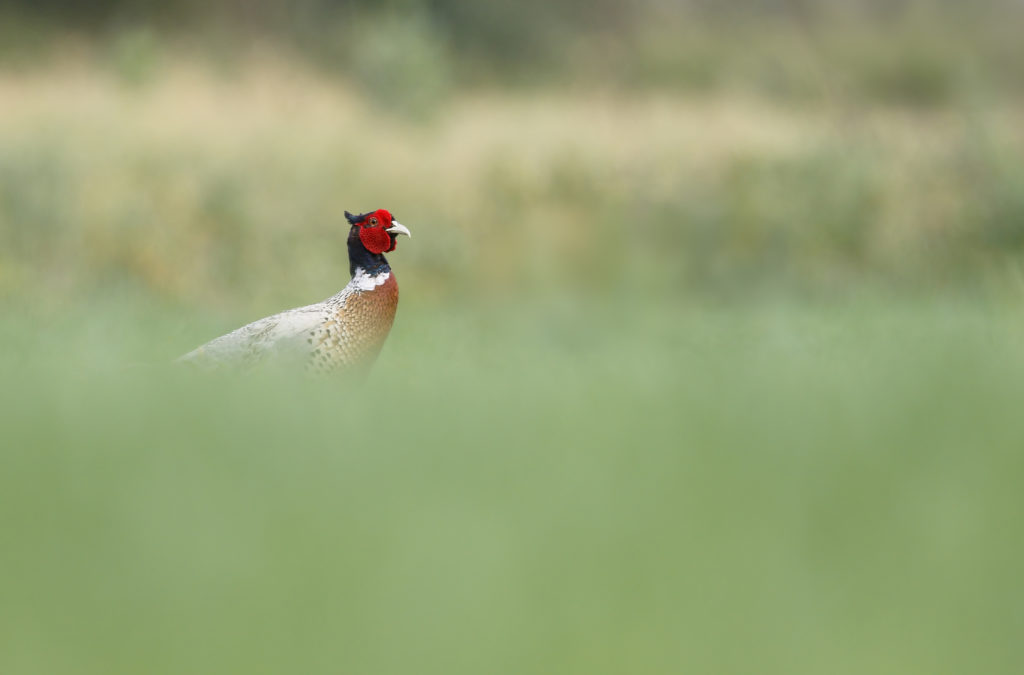
18th July 2020
The cutting of the rapeseed started at dawn today, and by lunchtime the field was stubble. The reduction in birdsong was quite noticeable once the rapeseed had been harvested. The large flock of green and goldfinches have moved on, although at least one family group of both have stayed in the area as they visit the seed feeders in our garden each day.